Toxic algae bloom causes Florida state of emergency
- Published
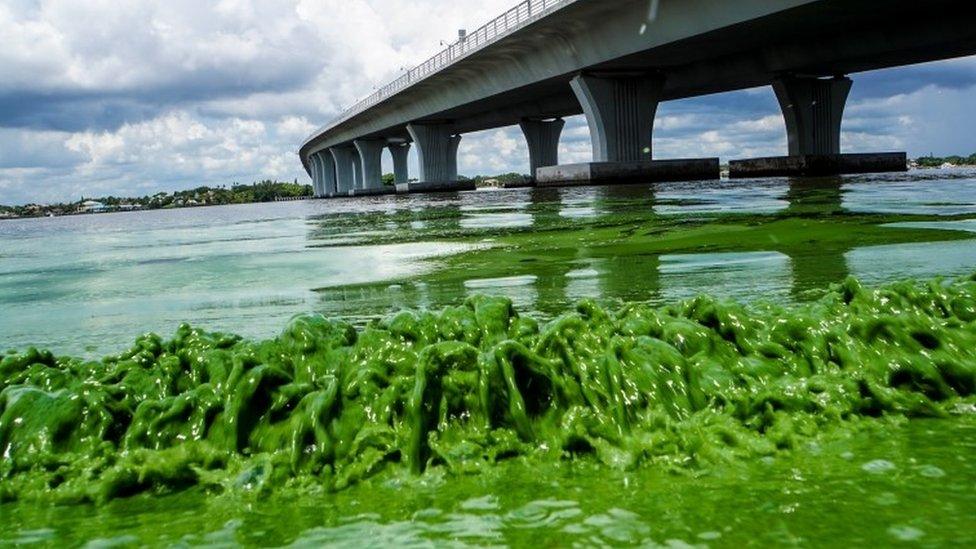
The highly toxic algae has caused a state of emergency in Florida
Swathes of thick, algae blooms have plagued miles of Florida coastline, prompting the governor to declare a state of emergency.
Governor Rick Scott issued the executive order in four counties after samples taken from the St Lucie River tested positive for toxins.
The green slime appeared when polluted water was discharged from Lake Okeechobee to prevent flooding.
The toxic algae can be harmful to plants, animals and humans.
The US Army Corps of Engineers began discharging freshwater from the lake more than two weeks ago.
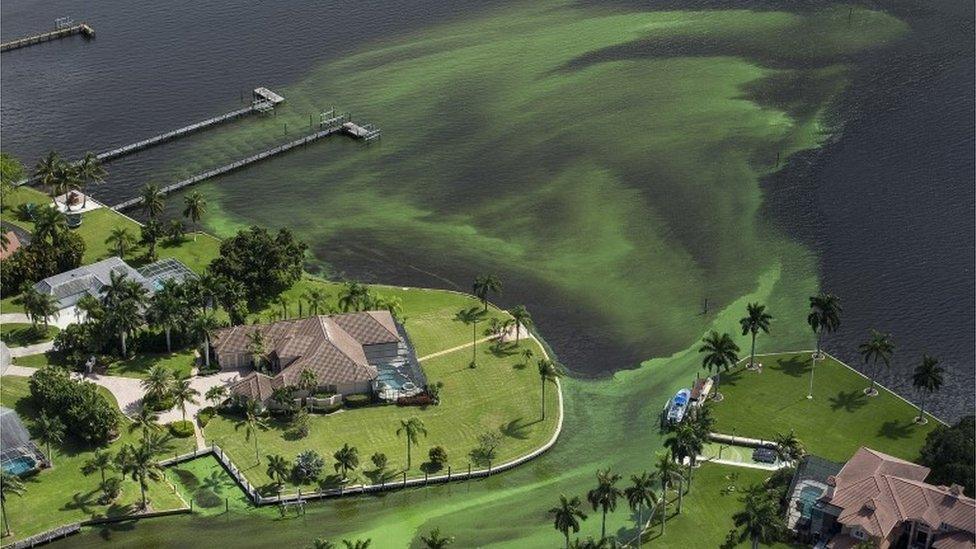
The algae spread to some of Florida's beaches and rivers after water was discharged from Lake Okeechobee
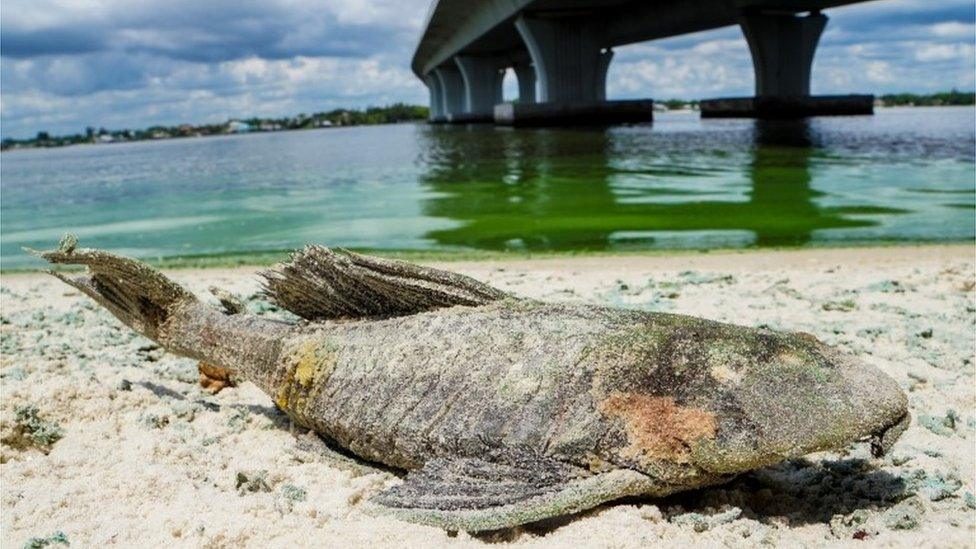
The toxic algae is harmful to plants, animals and humans
Lake Okeechobee, the largest freshwater body in the state, is contaminated with runoff that includes human waste, animal feed and fertiliser.
The process sent millions of gallons of the nutrient-heavy water into the river and triggered the growth of blue-green algae on some of Florida's southern rivers and beaches.
Samples taken in the river near Palm City and Stuart tested positive for hazardous levels of toxins.
If ingested, the toxic algae could cause nausea and vomiting and rash or hay fever if touched or inhaled.
Beaches along Florida's Treasure Coast were closed last week in response to the expansion of the green sludge.
Though many of the beaches have reopened, officials recommend that people stay away from the hazardous waterways.
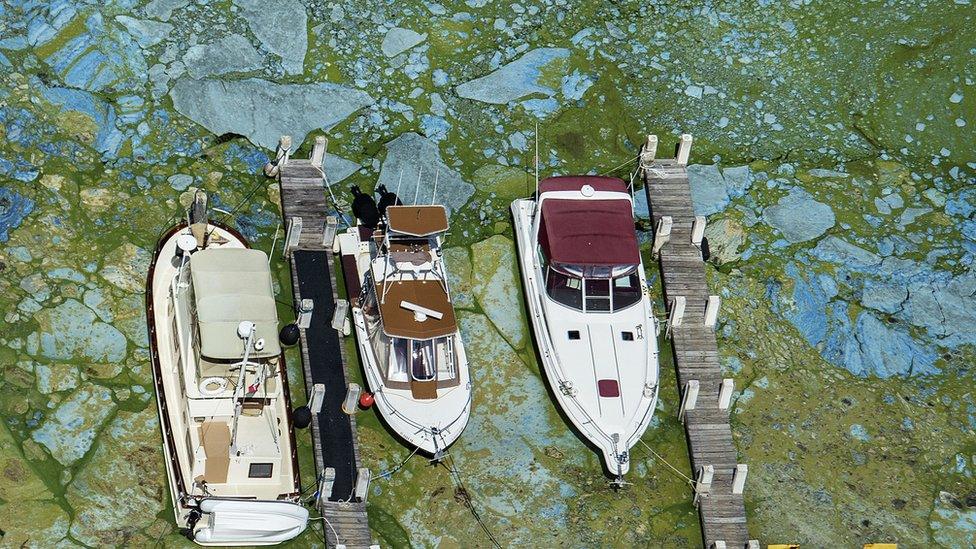
Boats docked at Central Marine in Florida are surrounded by blue green algae
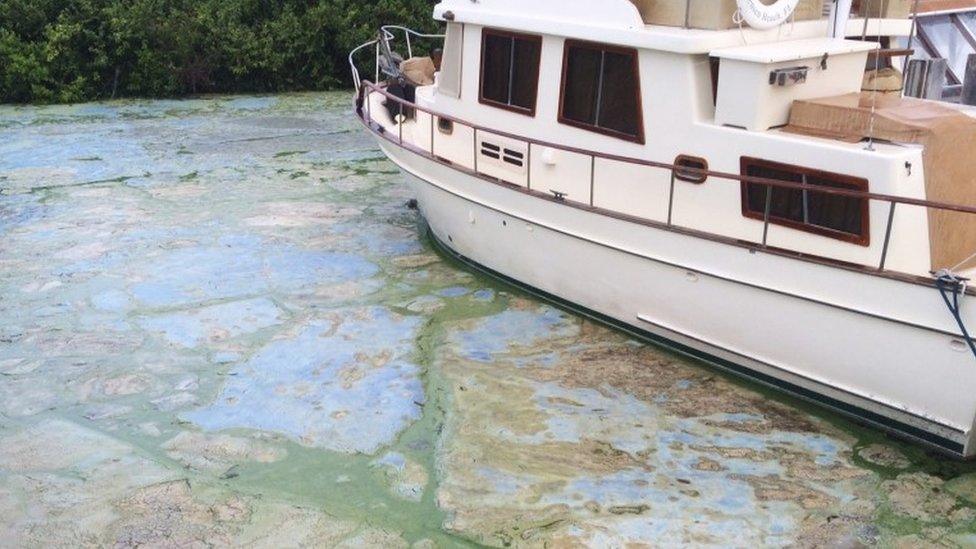
Officials recommend Florida residents stay away from algae-infested waters
Governor Scott blamed the polluted waters on water storage limitations and the federal government.
"Florida's waterways, wildlife and families have been severely impacted by the inaction and negligence of the federal government not making the needed repairs to the Herbert Hoover Dike and Florida can no longer afford to wait," Scott said.
Florida Senator Marco Rubio on Friday called on President Barack Obama to declare a federal state of emergency and to release funds to help businesses affected by the algae.
Mr Rubio and Senator Bill Nelson have also urged the US Army Corps of Engineers to stop the flow of water between the river and Lake Okeechobee.
The Army Corps began reducing the flow on Friday, focusing on the Caloosahatchee Estuary and the St Lucie Estuary.